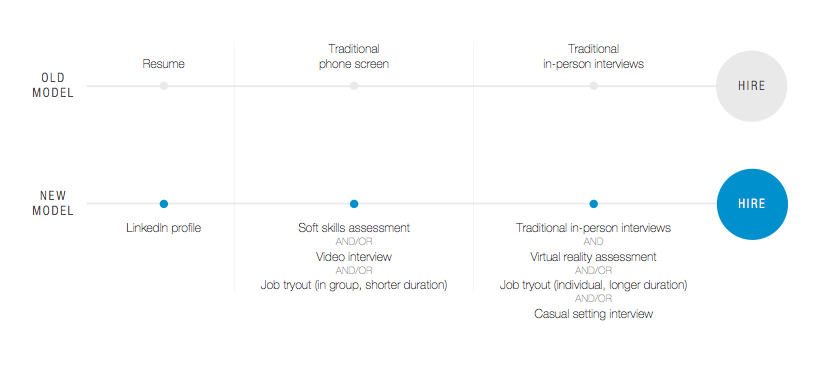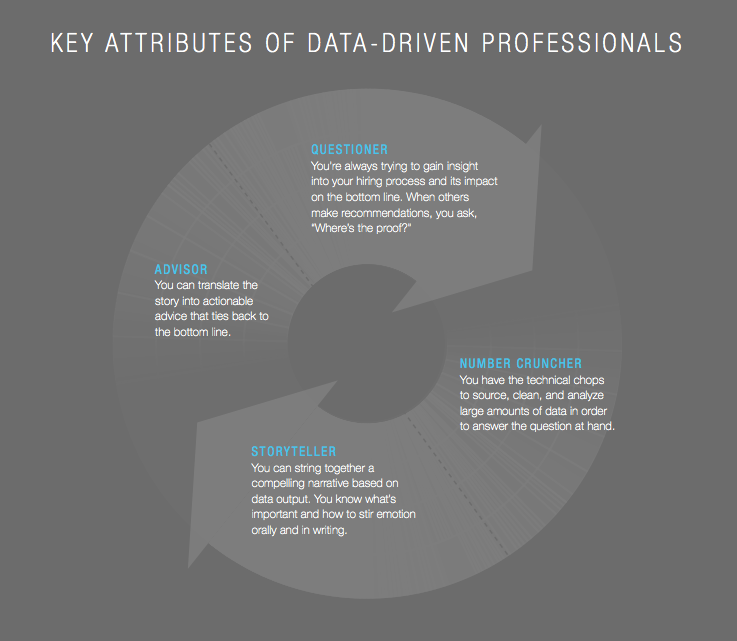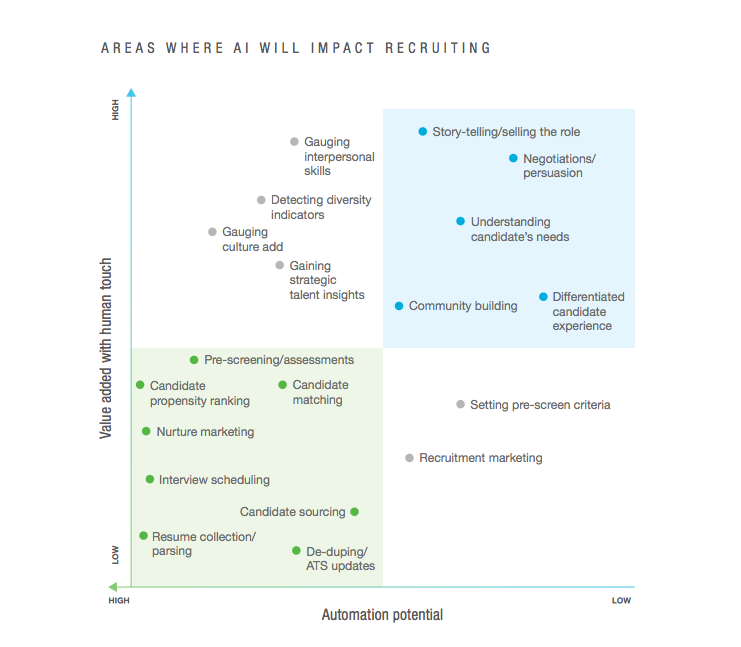Global Recruiting Trends 2018 – LinkedIn Study
LinkedIn is the main social platform for recruiting purposes.
Latest statistics show there are more than 562 million users on LinkedIn in over 200 countries, more than 15 million jobs are listed on LinkedIn Jobs and professionals are signing up to join LinkedIn at a rate of more than two new members per second.
The collected data and info allowed LinkedIn to research global recruiting trends for 2018.
Find out the 2018 global recruiting trends, discover how various companies apply them to their hiring processes and see the results these new tools have brought them.
[bctt tweet=”Global Recruiting Trends 2018 – LinkedIn Study @LinkedIn” username=”brand_minds”]
Global Recruiting Trends 2018 – LinkedIn Study
In the latest years, the hiring process has become highly inefficient. Tedious candidate searches, endless scheduling and repetitive screening have made it hard for recruiting professionals to find and attract valuable candidates. But there is hope on the horizon for both companies and candidates!
The LinkedIn study revealed 4 recruiting trends:
- Diversity;
- New interviewing tools;
- Data;
- Artificial Intelligence.
Companies interviewed by LinkedIn have found these tools to directly impact their recruitment process.
If you wish to increase the quality of your candidates and to improve your hiring process, keep reading!
1. DIVERSITY
Diversity used to be a box that companies checked. But today, diversity is directly tied to company culture and financial performance. LinkedIn data shows that 78% of companies prioritize diversity to improve culture and 62% do so to boost financial performance.
Companies that didn’t adapt to changing demographics have realised their talent pools were shrinking. Evidence has showed the benefits of diverse teams: increased levels of productivity, innovation and engagement.
Top reasons companies focus on diversity:
- 78% to improve culture
- 62% to improve company performance
- 49% to better represent customers.
Many companies fall short on achieving their diversity goals because they are not looking in the right places.
Diversity Challenges
Here are the biggest challenges that companies face when looking to improve diversity within the company:
- 38% cannot find diverse candidates to interview;
- 27% fail to retain diverse employees;
- 14% fail to get diverse candidates past interview stage;
- 8% fail to get diverse candidates to accept offer.
How do companies show candidates that they value diversity?
- 52% use diverse employees in web and print materials;
- 30% talk about ERGs;
- 35% present diverse interview panels;
- 28% recruit at schools with diverse student bodies.
Dos and donts:
- Do use inclusive language in your job descriptions
Inclusive language will broaden the appeal of your opportunities and let you reach more diverse talent.
- Do empower employees to tell their stories
The storytelling exercise itself will boost engagement with employees while growing your reach with diverse candidates in an authentic way.
- Do promote inclusion and advocate change with ERGs
You have much more diversity power when you can lean on the natural momentum of grassroots groups.
- Don’t have a diversity “strategy.”
Think of it as a mindset instead. Start small to effect change. Weave it into everything your company does, little by little.
- Don’t invest without buy-in from the top
You won’t go far if your leaders aren’t sold on the value of diversity. The bottom line will always grab their attention so make your case with numbers.
- Don’t perpetuate the appeal of “culture fit”
Change the bar with which you assess talent from “culture fit” to “culture add” to better create a culture of differences.
2. NEW INTERVIEWING TOOLS
Interviewing is the most widely used tool by recruiters. That being the case, traditional interviews have many flaws and hiring experts have detailed where they fall short.
Interviewing Challenges
- Assessing candidate soft skills – 63%;
- Understanding candidate weaknesses – 57%;
- Bias of interviewers – 42%;
- Too long of a process – 36%;
- Not knowing best questions to ask – 18%.
To get different results, recruiters have changed the way they conducted the interviews.
Interviewing Innovations
Here is how recruiters improved their interviewing strategies:
- 59% used soft skills assessments;
- 54% conducted job auditions;
- 53% met with candidates in casual settings;
- 28% conducted virtual reality assessments;
- 18% interviewed candidates through video.
“Take a look inside their heart, rather than their head.”
Walt Bettinger
CEO of Charles Schwab
Companies using new interviewing tools:
- Citi piloted the Koru7TM, a 20-minute survey that ranks candidates’ soft skills strengths and weaknesses which allows Citi to conduct more informed interviews;
- Jet.com interviewed candidates on ferris wheels;
- Daimler AG took candidates for a spin in a Mercedes;
- Lloyds Banking Group evaluated candidates in virtual reality as part of a day-long assessment center visit;
- KPMG used video interviews to evaluate candidates’ skills at scale, before even meeting them.
 LinkedIn Global Recruiting Trends 2018
LinkedIn Global Recruiting Trends 2018
“We were hiring based on experience and not potential, and the profile of our leaders yesterday will not be the same profile for our future leaders. Our process was not fit for purpose in the connected world.”
Melissa Gee Kee
Strategy Director to the CHRO, UNILEVER
Benefits and results of new interviewing tools:
- Better assessment of soft skills;
- More talent pool diversity;
- Positive candidate experience;
- Better ability to see character;
- Candidates can try out job for fit – 59%;
- Less bias than traditional formats – 47%;
- Video has cut the number of in-person interviews from thousands to hundreds, freeing up significant recruiter time;
- The hiring process changed from experience based to potential based;
- More realistic snapshot of candidate’s personality – 69%;
- Candidates can’t lie about skills – 26%.
3. DATA
Most recruiters and hiring managers use data in their work now and even more are likely to use it in the next two years.
Data can be used to predict hiring outcomes, not just track them. Data can power machines to make smarter recruiting decisions for recruiting experts.
How companies use data in talent acquisition:
- 56% to increase retention;
- 50% to evaluate skills gaps;
- 50% to build better offers;
- 46% to understand candidate wants;
- 41% to do workforce planning;
- 39% to predict candidate success;
- 38% to assess talent supply and demand;
- 31% to compare talent metrics to competitors’;
- 29% to forecast hiring demands.
Data-based recruiting challenges
What prevents hiring managers to use data?
- 42% say the quality of collected data is poor
- 20% are not sure where to get it
- 18% say data is too expensive
- 14% are not sure how to use it.
Companies using data-based recruitment:
- Nielsen used data to find out what was the reason for losing talent and how to prevent it: thanks to collected and analysed data, they found that employees with a change in job responsibilities due to promotion or lateral movement within the past two years were much less likely to leave;
- Novartis leveraged data from LinkedIn to decide where to open its new office;
- With the help of its customer feedback data, JetBlue tweaked its target profile;
- Atlassian used internal data and LinkedIn’s talent pool reports to pinpoint key European markets where the supply of tech talent exceeded the demand.
“Data is the one language that everybody speaks across the company. I gain trust from people across functions by bringing something that can be verified, something that can be checked.”
Bret Larson
Director, Talent Management & Analytics, EMERSON
Benefits and results of data-based recruiting:
- Increased employee retention thanks to more opportunities being offered to them;
- Faster decision making;
- Access to passive talent;
- Stronger employee engagement;
- Higher customer satisfaction;
- More international hires;
- Stronger employer brand;
- More credibility for talent acquisition professionals.
 LinkedIn Global Recruiting Trends 2018
LinkedIn Global Recruiting Trends 2018
4. ARTIFICIAL INTELLIGENCE
This next-generation technology helps recruiters work faster by automating administrative tasks, and smarter by generating insights they wouldn’t think of alone.
Challenges of AI recruiting
Many recruiting professionals fear AI is going to take their jobs. But this assumption is not accurate.
AI doesn’t replace hiring professionals, it empowers them.
AI augments their jobs by analysing more information faster and smarter than they could ever do alone. It automates low-level tasks so they can focus more time on recruiting strategy and candidate relationships. LinkedIn’s research showed AI was least likely to replace the parts of the job that require personal and emotional engagement.
“Companies still need people — people to persuade and negotiate, to understand candidate needs, and to build communities and cultures. Paradoxically the more you use the technology, the more you can invest in the human side of the job.”
Artificial Intelligence supports companies as follows:
- 58% to source candidates;
- 56% to screen candidates;
- 55% to nurture candidates;
- 42% to schedule candidates;
- 24% to engage candidates;
- 6% to interview candidates.
 LinkedIn Global Recruiting Trends 2018
LinkedIn Global Recruiting Trends 2018
Companies using Artificial Intelligence in their recruiting process:
- Intuit developed an algorithm-driven digital platform that scores and prioritizes candidates based on the profiles of its top performers;
- Vodafone used AI-powered software to screen its videos: based on role requirements, other candidates, and top performers at Vodafone, the machines assess candidate suitability;
- Deutsche Telekom AG used a chatbot to answer questions that potential applicants have about posted job offers: filtering out candidates who were not relevant (based on chosen criteria) and telling those poor-fit candidates that their chances of getting hired were low so applying wouldn’t be recommended.
“Recruiting can and should include tech—without making myself redundant. It lets me go back to being human as an HR person again.”
Anna Ott,
HR Expert, HUB:RAUM
Benefits and results of AI-based recruiting:
- 67% saves time;
- Bigger talent pool;
- 31% delivers best candidate matches;
- Better ability to assess soft skills;
- 43% removes human bias;
- Better candidate experience
- 30% saves money;
- Higher recruiter efficiency.